(QBĐT) - At the age of seventy, many writers have "settled down" with their concepts and writing styles. But Nguyen Tien Nen is not like that. He always seeks and approaches new trends to create momentum for his creative "wings". The birth of the new poetry collection 1-2-3 "Vun va Lanh" (Fragments and Fragments) , published by the Writers' Association Publishing House in October 2024 is proof.
1-2-3 &100
The 1-2-3 poetry form was initiated by poet Phan Hoang, member of the Executive Committee of the 10th Writers' Association (2020-2025). In terms of form, each poem is an independent entity consisting of 3 paragraphs and 6 sentences. Paragraph 1 has only 1 sentence with a maximum of 11 words, which is also the name of the poem, to avoid duplicating the names of poems that have appeared. Paragraph 2 has 2 sentences, each with a maximum of 12 words. Paragraph 3 has 3 sentences, each with a maximum of 13 words. The more refined the words are, the more polysemous they are, and the more valuable they are.
The subject of verses 1-2-3 is completely free, the main content goes from the external environment gradually to the inner depth that the author wants to express. The independence of each verse in relation to the whole poem is especially encouraged, at the same time, there is a correspondence between verses 1 and 6 so that the content of the poem is tight and unified in a separate aesthetic space.
With a poem only allowed 6 lines, maximum 74 words (including title), requiring the writer to condense the words, but must convey the full emotion of a poetic idea. This is very difficult, not everyone who tries it is successful. Nguyen Tien Nen has approached this poetic form since the end of 2022 and he has soon succeeded with the "Good Poetry of January 2023" award voted by the 1-2-3 Poetry Forum. In less than two years, with 1-2-3, he has completed 100 poems and released "Vun va Lanh". I admire him!
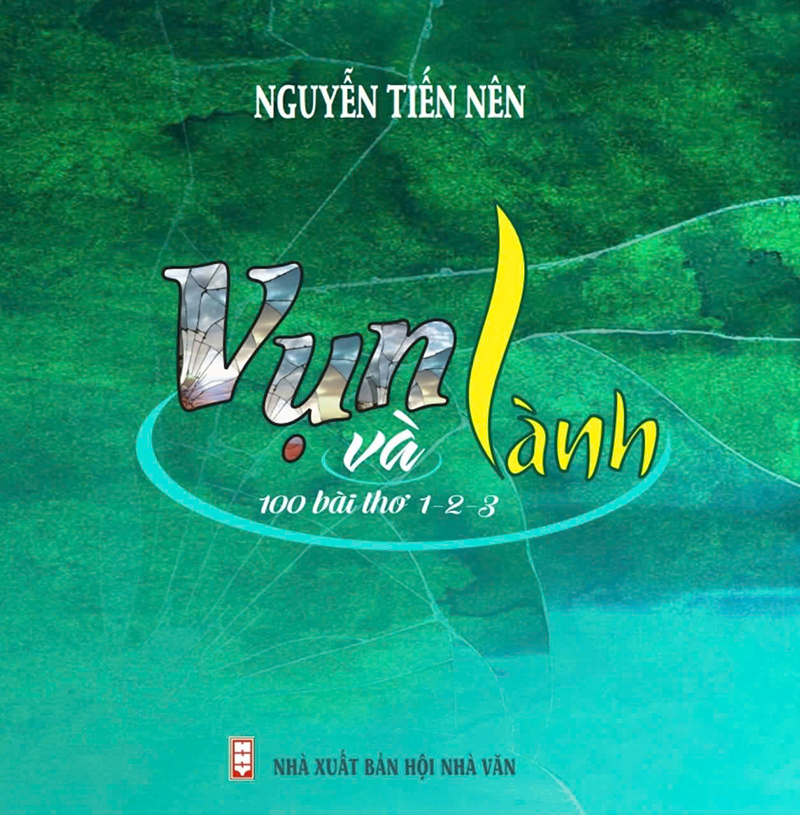 |
Poems full of creative wings
Nguyen Tien Nen began his writing career when he was middle-aged, starting with traditional poetry with propaganda content. Although he was passionate about it, by the age of over 60, he had not yet established a “place” in the literary world. Realizing that if he did not study deeply and innovate creatively, he would fall behind, he began to “learn from teachers” with postmodern poetry and achieved success with the B prize, the Luu Trong Lu Literature and Arts Award of the People's Committee of Quang Binh province for the poetry collection “Rebirth”.
Not stopping there, when the 1-2-3 poetry trend was booming on literary forums, he immediately "jumped" in. Nguyen Tien Nen confessed in his work: "At the end of 2022, after feeling the beauty, the cleverness, the tightness... and the spread of the 1-2-3 poetry form... I started to try writing a series of poems with the first 5 poems, published by Saigon Literature. Since then, I have spent a large amount of time composing this poetry form". Writer Ho Si Binh, Deputy Director of the Writers Association Publishing House Branch in Da Nang, also commented on "Vun va Lanh" : "I thought this was a new experiment in this poetry genre, but after reading the entire collection of poems, I realized that the 1-2-3 poetry genre is a lush nursery that produces beautiful fruits, a genre of poetry that suits Nguyen Tien Nen's poetic soul...".
The poetry collection “Vun and Lanh” is structured according to 3 themes: Drinking wine with the world, Love songs of seabirds, With rooted breaths. In the poem choosing the word as the title for “Vun and Lanh” with the structure and “condensed” language, he wrote: “Vun and Lanh both contain their own meaning/The two terms do not share the same bowl and chopsticks/With this poetic form, Lanh and Van live on the same tray/Unlike the broken pieces that are difficult to connect in everyday life/With poetry, all the good things are born from broken pieces/Each moment, 1-2-3 precious rose petals spread their fragrance”.
In the process of renewing himself and his poetry, Nguyen Tien Nen had moments of dizziness and headaches with his chaotic, chaotic, and indefinite “I”: “Everywhere I look, I see me and me and me/Chaotic centripetal movements/The struggles that almost turned me into an indefinite spinning top…” but in the end, “It seems that in the orbit that is not that orbit”, he heard “The call of birds, the verse grows wings and I find myself” (I walk between me and me and me). The “I” that he “found” is also the “wings” that he affirmed in the poem “Not a few species are born with wings” , those are the wings that wish to soar but must know how to “… Sing the voice of the same species/And my own voice”.
Those are also the creative verses that give him the momentum to fly high and far into the dreamy but very cruel world of poetry. To make him a “Driver who only steers the wheel in one direction/At the crossroads of life, everyone has the right to choose a direction”. And once he has chosen a direction, he has tirelessly traveled and summarized it for poetry: “After each trip, we re-roof the house/Re-roof the mold and moss/The roughness of the years…Roof tomorrow with poems”.
It is not until now that he has realized the poet's calling, but it is thanks to those "trips" that he has known how to "add" to his calling. He has the surprisingly concise verses "Poets celebrate Tet while eating words". He continues to affirm that calling in the poem "Who are you, poet" is no one, just: "Worker bees specialize in making sweet honey/Making the intonation of power-happiness-suffering/To bring humanity higher-closer together...". He realizes the value of literature that never dries up or cools down: "Just one spark/All will have a chance to be warmed up...". Who ignited that spark? It was the poet! But to do so, he must know how to "Despite the terrible boxing" and must know how to "be allergic to empty slogans...greedily picking up the bitterness of the human world/Gathering the loneliness and exhaustion of the world..." to give birth to poetry!
Poetry wings fly across the country
If you think that a poet only needs to have a rich imagination and emotions to be able to create poetry, then Nguyen Tien Nen is wrong. To have 100 poems in “Vun va Lanh”, he literally “traveled the world with you” and realized many things “Only this country. The place where we were lucky to be born” . On the S-shaped strip of land, every place he passed through became poetry, music, and homeland: “Where is homeland?/Where our father’s plowing path is sprinkled with salt on the fields/Mother’s bald-headed rice shoots on the field’s foot/Coughing in the middle of the night/The betel mill rolling around…”.
His homeland is simple yet sacred, so his "poetry" keeps wandering. Just "Passing through the market and meeting a crab seller" he was stopped by "The musical notes of childhood echoing back" , because the breath of Vietnam is always present: "The rice wrapped in a bowl is boiling during the festival season... The round conical hat is not round enough to cover the rice fields/The bowl of sour soup is sweet to the pink lips and fragrant to the blood vessels of my life".
If when he came to Singapore, he realized: "Inherent excess does not start from education/Self-awareness and civic consciousness" , then when he returned to Chua village, the hometown of poet Nguyen Quang Thieu, he realized the love of poetry in the farmers: "... Without letters, it is impossible to see the path to walk/Day by day they cultivate in the fields/Night by night they cultivate the same fields in their sleep/For them, poetry is grain in the fields of others...". These are the "winged" verses of Nguyen Tien Nen.
In a short article, it is impossible to describe all the poetic qualities in “Vun va Lanh” . Because each poem is a very strong imprint of the thoughts and reasoning of the people and the land he passed through. From the cleaning lady whom he saw as “real actors under the yellow lights” in the city, to “The farmer leaving the saddle, ten fingers leisurely/Dancing gracefully…” in the garlic fields of Ly Son, Quang Ngai. From the figurative verses: “… Feet immersed in fragrant mud, the dialect emerges/ The legend of each canal and page of the novel Ca Mau”, to the flower land of Da Lat with its clear poetic images: “The mist urges the seeds to warm the air/ Time breathes to help the seeds move/ The land knows how to soothe people’s hearts with countless colors and scents…”.
Yes! Nguyen Tien Nen's poems are everywhere. "Vun and Lanh" has given readers the opportunity to enjoy the condensed 1-2-3 poetry genre, and countless vivid poetic images. However, those poems still have "feathers" that need to be trimmed. In poetry, self-repetition is "dangerous". "Vun and Lanh" is a different genre, but it has repeated many poetic ideas and poetic ideas that have been published. Besides, the author has used too many repetitions and combinations of words with the purpose of innovation, but to me it is not new, but also annoying, such as: Rinse, dirty, slimy, twisting, suffering...
To conclude the article, I would like to quote a few lines from the poem “Where do we go in the search for the self” to emphasize that Nguyen Tien Nen’s self has been clarified: “A noble bird knows how to distinguish between evil birds/A clever bee or butterfly avoids sucking on the nectar of sorrow…”.
Do Thanh Dong
Source: https://www.baoquangbinh.vn/van-hoa/202411/nguyen-tien-nen-va-nhung-cau-tho-moc-canh-2222106/






![[Photo] General Secretary To Lam attends the 80th Anniversary of the Cultural Sector's Traditional Day](https://vphoto.vietnam.vn/thumb/1200x675/vietnam/resource/IMAGE/2025/8/23/7a88e6b58502490aa153adf8f0eec2b2)
![[Photo] Prime Minister Pham Minh Chinh chairs the meeting of the Government Party Committee Standing Committee](https://vphoto.vietnam.vn/thumb/1200x675/vietnam/resource/IMAGE/2025/8/23/8e94aa3d26424d1ab1528c3e4bbacc45)



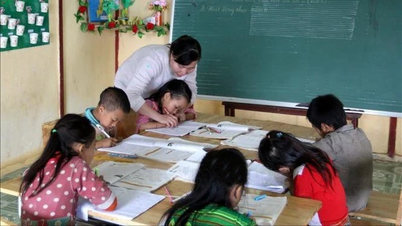

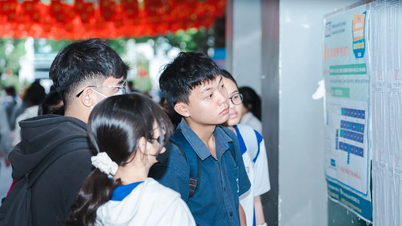








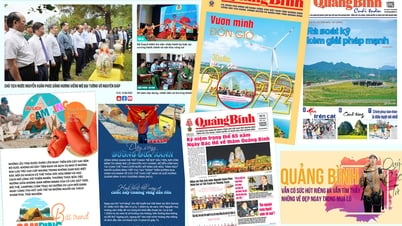


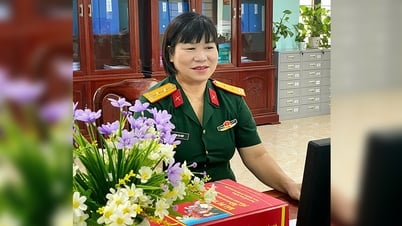
































































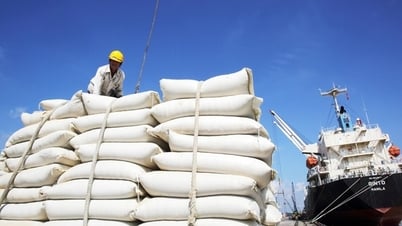














Comment (0)